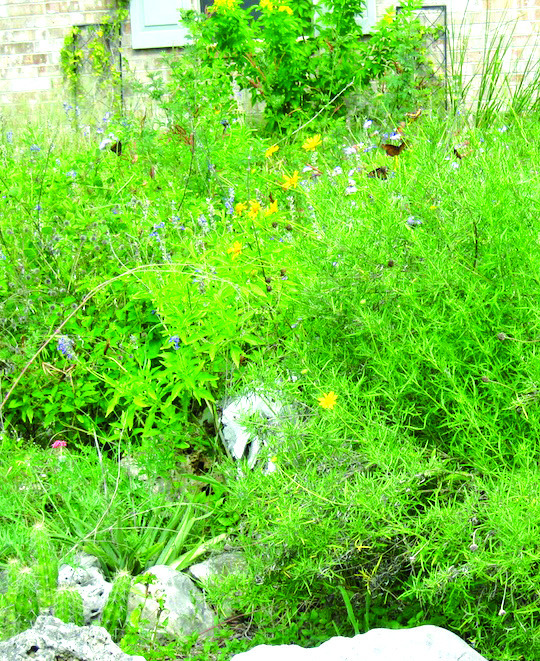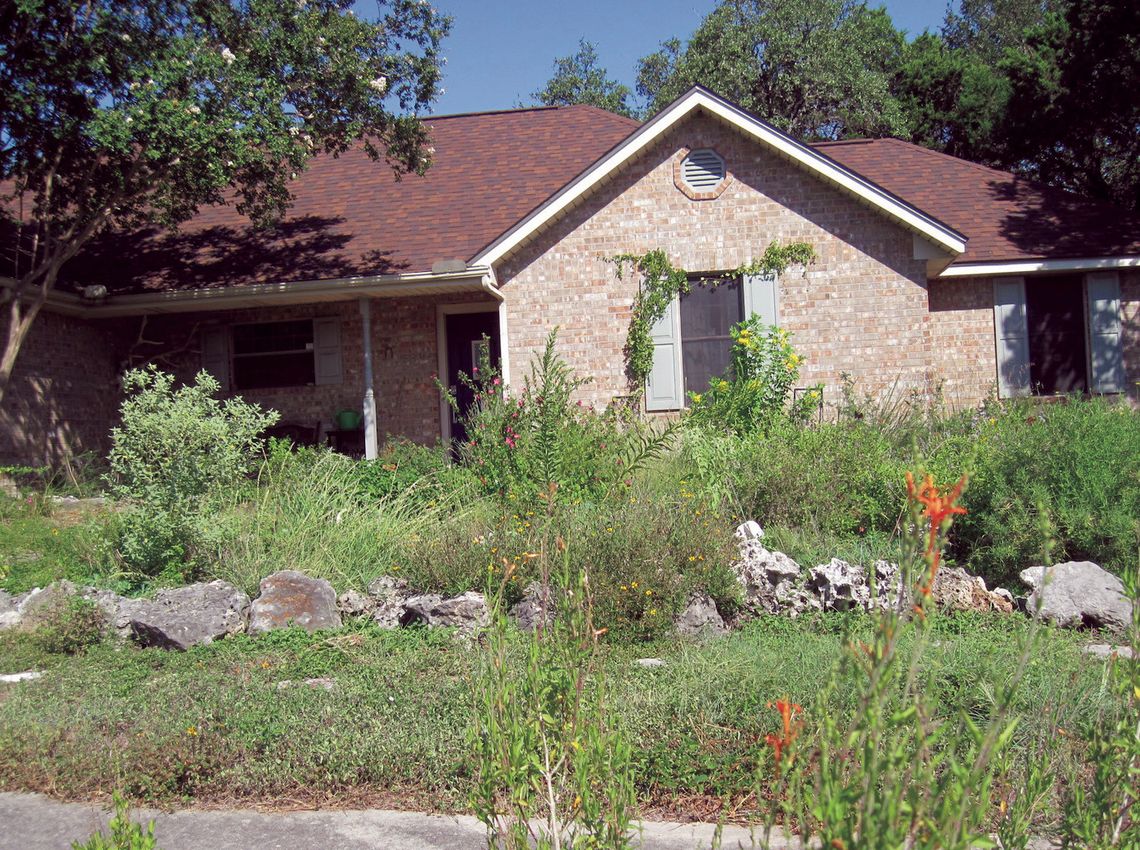Urban arboretum includes 200 native trees
Even after a series of 100F+ days in San Marcos, one front yard is still benefiting from recent rains (think deep plant roots) and is attracting butterflies with colorful blooms. Spring Lake Garden Club’s September Yard of the Month is on Lancaster Street in the Sendera area of Castle Forest, bounded by Old Hwy 12 and Craddock Street. At the top of a rise adjacent Greenridge Cove., the home of Silas Ott is a living example of a collection of native plants thriving in their own environment, with supplemental watering reserved only for establishing newcomers.
Instead of the popular “urban meadow” plan, this yard is an urban arboretum, including over 200 native species collected from all over Texas. As a professional wildlife biologist, Silas Ott has ample opportunity to collect both plants and soil samples (with permission) from clients across the state, as well as decorative limestone for edging plant areas. When he moved into his home in 2021, the front yard was ready for a redo: a dead tree in the middle had been removed and turf grass was dying, so starting over made good sense. He removed existing grass and brought in additional soil, marking out separate edged areas to accommodate plant requirements. Flagstone steps laid on pathways between these areas are surrounded by low-growing frog fruit and horse herb, popular native groundcovers.
Some existing plants in the yard were integrated into the new landscape, including a tall white crape myrtle near the entrance, offering partial shade for a small plot of herbs including basil, sage, creeping rosemary, Mexican oregano, lavender, thyme, and wild garlic. Other trees line a strip bed along a neighbor’s driveway, providing more shade and privacy. A volunteer oak has joined the mix, along with added natives such as anaquita, mountain laurel, Texas ebony, Texas torchwood (a citrus), and mimosa.
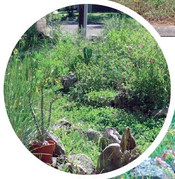
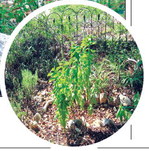
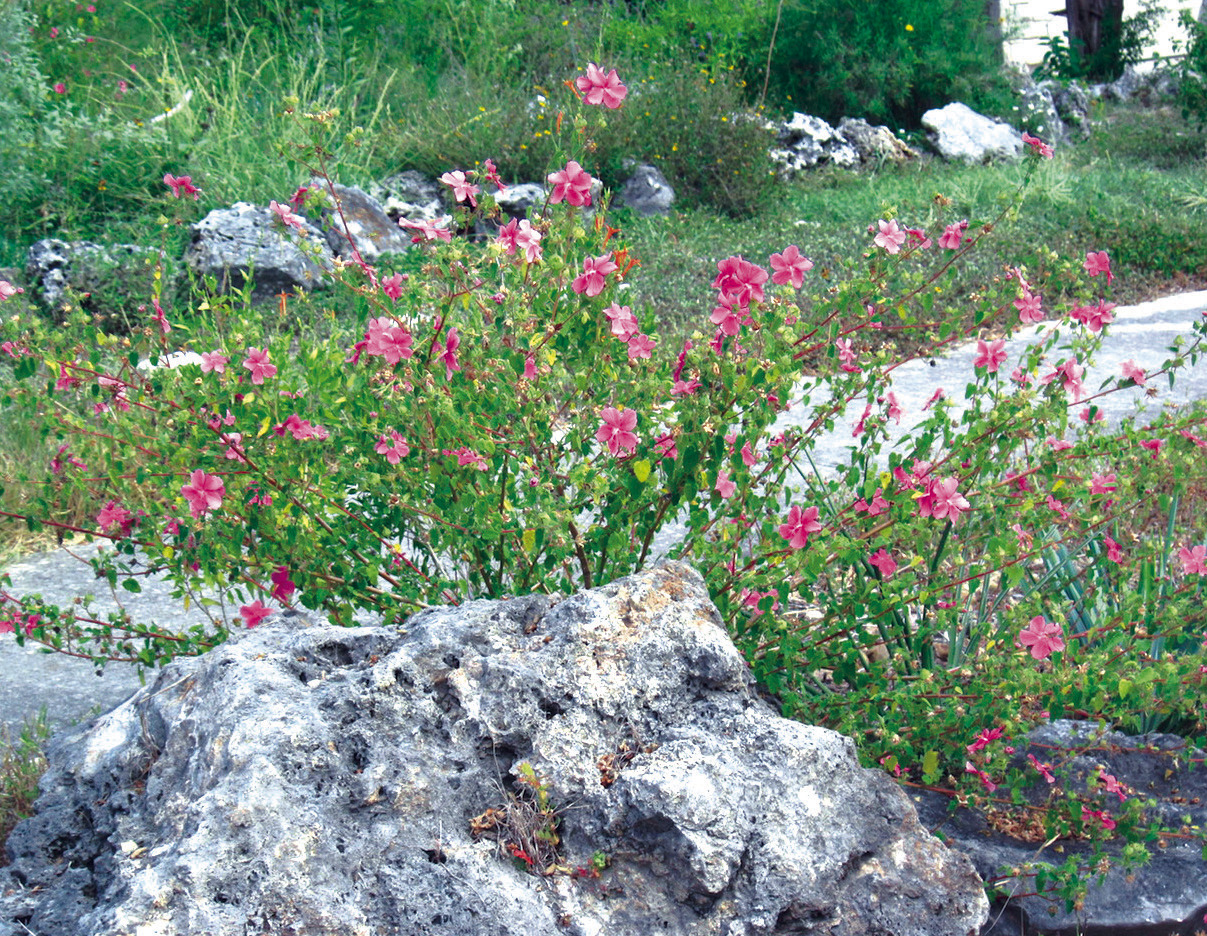
A tall yellow esperanza against the house provides scale and backdrop for an area filled with more than 40 different native grasses, joined by contrasting native plants such as salvia gregii. The central planting area also features taller plants, from rock rose with intense pink blossoms to miniature flowers such as fleabane and blackfoot daisies. Butterflies swarm blue mist flowers in the center of the bed, and other colorful blooms include skeleton leaf goldeneye, purple lantana, and fall asters. One unusual plant from west Texas called candelaria was once used to make actual candles. In total, the central bed includes over twenty different native plants, all evolved to survive Texas summer heat.
The curbside strip of yard next to hot pavement may stress plants more than any other location, but even this area hosts colorful pink blooms of rock rose against the mail tower and scarlet spiderling at one end. Tall flame acanthus sports orange blooms, matched by tall flower stalks of red yucca (an agave). Pale yucca with broader leaves and side oats gramma grass complete this “hell strip” curbside planting. From herb garden through collected grasses and a wide variety of Texas native plants, September’s yard of the month indeed shows that native plants can take the heat.
